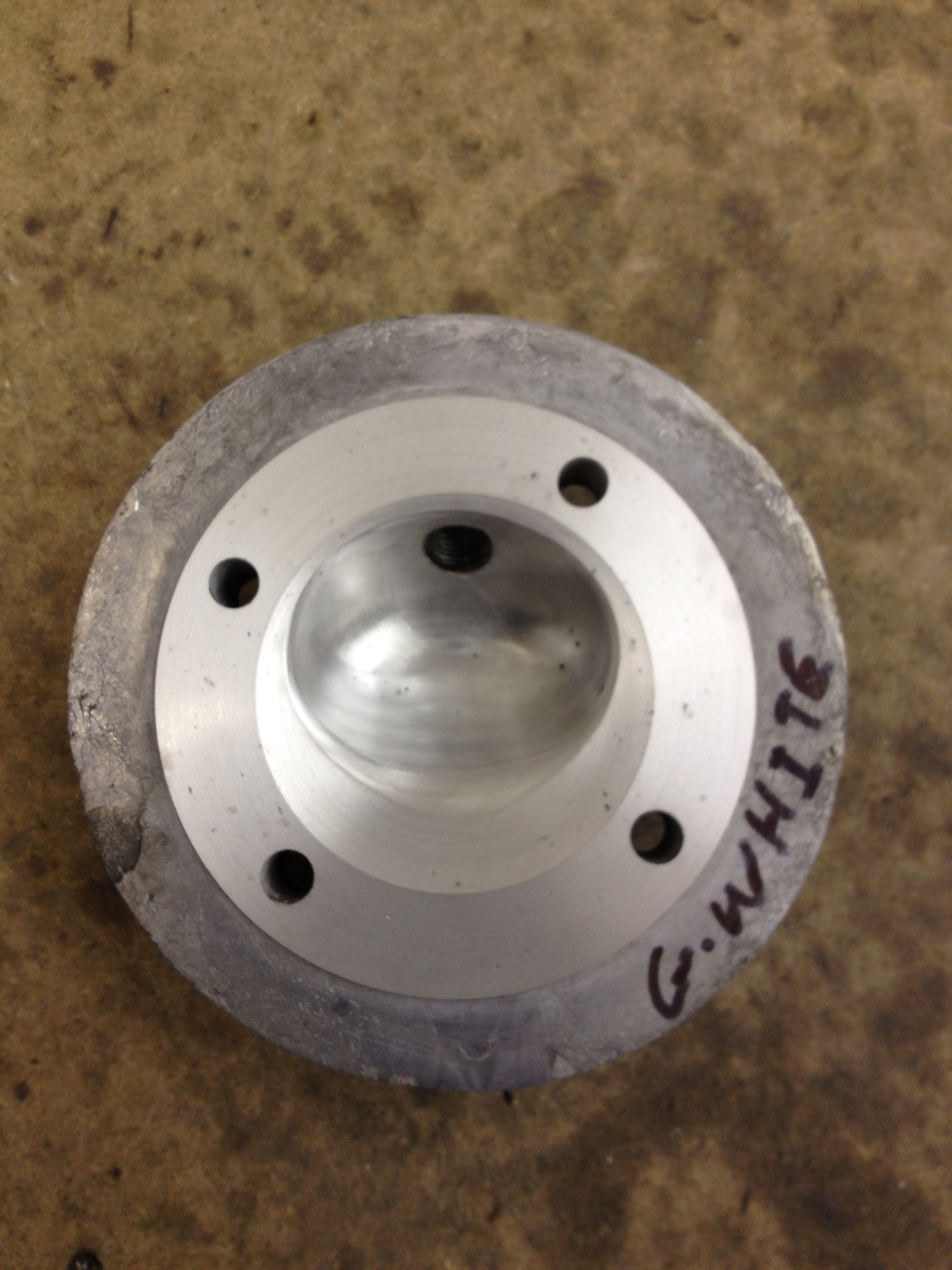TECH ENGINE CYLINDER HEADS
Cylinder heads are a very important part of a two-stroke engine. Their design can be very critical to how an engine works and how reliable that engine will be. There are plenty of theories to complicate matters, some work, some don’t, some are relative to Lambretta engines and some are not.
Things could get a bit complicated so we won’t bore you with the theories but only what works for MB engines. Usually the higher the compression ratio the higher the horsepower but within reason! This would be fine a few years ago using 4 and 5 star fuel. Unfortunately these days we only have Super Unleaded, Unleaded and now with increasing amounts of Ethanol added to fuels which are now nothing but a problem these days.
Compression ratios are governed by this fact, low octane fuels need lower compressions to make the engine reliable! By doing this, loss of speed will occur. It’s swings and roundabouts, reliability over speed. Our engines and any one else’s engines these days are slower than they were the 1980’s and 1990’s!
CYLINDER HEADS THE MB WAY
As mentioned, cylinder head design is very critical to how your engine will work. Different types of pistons have different dome heights depending on model and manufacturer. With this in mind MB cylinder heads are RE-PROFILED to suit the shape of the dome used. This then gives a perfect squish clearance, which is a very important part of the engines design. A high Lambretta dome will trap more air fuel mixture so the compression ratio will be higher than a Honda piston which is nearly a flat topped piston!
RE-PROFILED
What does this mean? Sometimes we call it high compression, or hi comp! But this is not a real description. If you make a head as high compression as possible, where do you stop? There are loads of theories, it has to come down to what work reliably! Re-profiled means taking the dome of the piston and cutting the head the same shape. Then after that…….. which is a separate issue is the compression ratio issue!
SQUISH CLEARANCE AND COMPRESSION RATIOS
The squish clearance is the gap between the piston and head at top dead center. Most road going Lambrettas should run a minimum of 1mm and a maximum of 1.5mm squish clearance to achieve maximum benefits from the engine. A squish clearance below 1mm could mean at high rpm that the crank, con rod, piston and bearings could stretch, expand and then the piston could hit the head, causing a failed engine. A perfect squish clearance would compress the air fuel mixture into the combustion chamber to give a maximum spark and power once ignited, without the piston hitting the head at full rpm.
A squish clearance of more that 1.5mm would mean that the trapped mixture left in the squish band wouldn’t be compressed into the combustion chamber, causing the mixture not to fire correctly and a lack of power would occur! Increasing the squish clearance or adding a head gasket to increase the squish clearance WILL lower compression but this is not beneficial to making the engine run right.
On most Lambretta engines machining a head to the dome of the piston will give a correct squish band for power, but when a compression test was done you would find that, even with 4 star fuel the compression ratio would be far too high, for race use let alone road use! This was the cause of many an engines failure over the years! In the 1980’s we moved from standard 21 degrees to 19 degrees ignition timing to stop pinking, seizing and holes in pistons with Hi Comp heads. We still found this way even with 4 star fuel that the head compression was too high, but jetted in we could get away with it. When we lost leaded fuel in 2000 we dropped timing to 17 degrees to help, but this on some engines lost power and revs, again it was swings and roundabouts.
To lower the compression ratio the combustion chamber bowl needs grinding out and polishing to lower the amount of compressed volume, this is worked out in cc’s.
Over the years MB have machined, tried and tested thousands of cylinder heads. We find that our method works and has cured many a faulty tuned motor even to this day! Different Scooter manufactures and tuners apply different methods of cylinder head design. Innocenti machined their heads to a curved dome, but it wasn’t true to the dome of the piston, it was a larger dome so it had a smaller squish clearance at the out side of the cylinders bore and with a larger gap towards the center of the bore. This effectively lowers the compression but also looses power because there is no real squish band (the width of head machined across the piston shape) Some dealers prefer this method! We have always found this way an engine is gutless in comparison to a true re-profiled (machined) head!
A common method to reduce compression by some people is to fit a fat head gasket to lower compression, but this is really wrong as explained. The need for this to happen has come around with unleaded fuel and incorrectly machined cylinder heads. Yes, this lowers compression but increases the squish clearance as mentioned this is incorrect and will loose lots of power and reliability!
Over the years some dealers have taken an average of the dome in a straight line and cut the heads squish band (the machined re-profiled area) straight! This would mean a trapped mixture could be gained on the outer side of the bore, with a tight squish clearance in the middle of the piston then a larger clearance towards the center of the bore again effecting compression ratios and the way the spark could ignite. Most dealers leave the combustion area alone then retard the ignition more or over jet to compensate for the over high compression. Again we feel this is wrong but it could be a way of tricking the engine to work from another persons prospective!
Take a standard Lambretta 200 head and machine it to a 70mm piston with the squish band/dome cut correctly and you take off a little as possible so you don’t go too far into the combustion chambers bowl, the cc’s of volume would be about 17cc add say 4cc for the squish clearance = 21cc. Working on the compression ratio below you need around 25cc + the 4cc to give a working compression ratio these days.
Whatever method used they all work in their way but MB stick to our well-proven method.
There are two ways to check compression ratios.
- UNCORRECTED
This is the old UK way quoted by most engine manufacturers. It measures the volume of mixture from bottom dead center to top dead center using a formula. This method and theory is used to find an engines cubic capacity.
- CORRECTED
This is the method the Japanese use. This measures by a formula the trapped mixture from top of the exhaust port, as this is when a true trapped mixture occurs.
A compression ratio measured the uncorrected way would show a higher reading than that measured the corrected way, this can get a little confusing when reading other people and companies technical specs so be aware! It pays to understand which way these people quote figures! Sometimes it gets very close, but it could be so wrong!
MB have used a mixture of the two lots of information to find suitable compression ratios for road going scooters. What amount needs to come out of the combustion chamber (this is the area sometimes called the compression/combustion bowl, the large dish/bowl area in the head) varies from engine to engine, this has mainly come about by trial and error, experience and a lot of compression ratio checks.
CYLINDER HEAD DESIGN
Motor cycle designers over the years have used a number of head designs based on different theories. Lambretta have also used different designs based on their theories. Lets face it a Lambretta has never been a full race two stroke engine………. it’s a glorified shopping / commuter transport machine, aimed at reliability with high mileage and high miles per gallon. The Lambretta manual and the tuning manual show various head types with different compression ratios, don’t worry too much about this as it means nothing to us in this modern age we have come on a long way since then. There is a lot of difference in compression ratios occurring though different head gasket thickness as stated in these manuals. With this in mind we will look at what is available for a tuned Lambretta engine.
CENTER OR SIDE COMPRESSION HEADS
Innocenti have produced two types of heads
- Center compression heads with side spark plugs, Gp125 and GT200
- Side compression heads with side spark plugs all the rest of the models
Which is best? This depends on who you talk to or what book you read. We look at it as which works best, which is the most reliable in a road engine (a race engine may differ) We dynoed a center combustion chambered head with center placed spark plug (center plug head), against a side combustion chamber with a side positioned spark plug (standard head) the standard version gave the best spread of power back to back with the same center plugged head with the same compression ratio! Now most people will tell you a center plug head will be best! We have never found it true on our TS1 test engine.
HEAD DIAMETERS
As also explained in the gasket section, heads need to be made just slightly larger than the pistons diameter. Why? Well it comes down to manufacturing tolerances and miss alignment of heads, and barrels which slide and move on studs. The Innocenti way of manufacturing is not a high tech way, it’s a simple production way nothing like a modern day 2-stroke engine which would be perfectly aligned in the manufacturing/assembly process! So you will see below, the heads diameter is 1mm larger than the pistons diameter……. this allows for miss alignment in assembly and still runs true today.
125 ENGINES, 53mm DIAMETER CYLINDER HEADS
There have been two types.
- Side plug, side squish (offset) combustion chamber, as used on most Li 125 engines. Part number 19111015
- Side plug, center combustion chamber, as used on the GP125 and 125 special. Part number 19411015
For most purposes both heads are unusable in tuned over sized motors as the compression ratio would be far too high. But are fine in standard motors set up correctly for modern fuels. It has been known to use them with 175 conversions as a last resort as more alloy needs grinding out of the combustion chamber compared to other heads.
150 ENGINES, 58mm DIAMETER
There have been two types.
- Side plug, side squish (offset) combustion chamber, as used on Li150, 150S and GP150 engines. Part number 19911015
- Side plug, side squish (offset) combustion chamber, Part number unknown
There seems to be some confusion with both types of cylinder heads, as part numbers were not always cast into the heads. They are very similar in appearance except one has a larger combustion chamber volume than the other. 150 heads are ideal to use on 150 – 175 conversions. The lower compression type is best as very little needs taking from the combustion area, but both can be used. Scooters India, API and the Spanish factories have produced 150 heads and are all basically the same, all types are usable for all conversions but some do not have a thick area where the head gasket goes and once machined heads can warp. Look out for Indian heads with a German swastika cast into it, if only for a confused bit of history, look it up!
175 ENGINES, 63mm DIAMETER
There is one type.
- Side plug, side squish (offset) combustion chamber. Part number 19711015
But
- The Italian pattern firm MDP/MEC has produced a 175 head over the years but was inferior in quality
- A 175 head has been available from India and is considered the same as an Italian head
- But there are also pattern heads which are not so good
175 cylinder heads are ideal to use on 150 – 175 conversion or 150/175 to 190cc or 175 – 200cc cylinder kits. These heads usually just require polishing after machining.
200 ENGINES, 67mm DIAMETER
There are two types.
- Side plug, center combustion chamber, as used on the GT/ TV 200 engine. Part number 42011002
- Side plug, side squish (offset) combustion chamber. As used on SX200 and GP200’s. Part number 42911002
The GT head is to be considered useless these days. An old conversion was to weld up the plug hole and replace it in the center of the combustion chamber where it should be for maximum efficiency, this conversion requires a shorter 1/2” plug compared to standard 3/4” plug.
SIDE SQUISH 200 HEADS
Innocenti only ever made one side plug head as fitted to Sx200’s and GP200’s, they have been fine over the years but have a very thin area around the gasket face and prove to warp easy so we have avoided using them for many years.
Spain made their own heads as a copy of the Innocenti ones and are still around as second hand spares. Beware the Spanish factory at some point altered their machining set ups with their crankcase, cylinder and head. When used as a matched engine you don’t notice anything. When you mismatch a cylinder, the cylinder will not go over the studs and into the casing, the reason was the stud holes were drilled off set, so was the cylinder and head! A Spanish head bolted to an Italian cylinder would have its combustion chamber well offset with even the gasket area over lapping into the bore! With this extreme case, pistons hit reprofiled heads on the outside. MB use a machining method to eliminate this problem. Our technique is to use an old 200 cylinder, it has been cut off so to use only the top two fins, tapered locating pins go into the head holes and we scribe a clocking line to make heads central to cylinders. Doing this method doweling or pinning is not necessary. Same as the Innocenti head these heads warp so we don’t recommend them!
The Italian pattern firm MDP/MEC has produced a 200 head over the years but was inferior in quality. The combustion area was massive and even when machined scooters went slower. When machined the head looked like Swiss cheese with thousands of holes. If still used it has been known for these heads to crack in half! Beware we don’t use these but others do!
Tino Sacchi has introduced various styles of center combustion chamber heads with a side plug, these vary with high and low compressions and are usually recognised with extra castings where the extra head bolts can be machined. MB do not use these heads normally, we do alter the compression ratios to cure blown holes in pistons.
There are only 2 heads manufactured today which MB use apart from our own heads
- SIL standard India head
- AF Rayspeeds remade Indian head
The Indians have beefed up the heads and are less likely to warp! The AF head has a funny off set to one side combustion chamber! When machined to suit the pistons dome and the combustion area is opened as explained then this centralises the combustion chamber correctly. Some SIL 150 heads are also coming with this offset side plug design for unknown reasons!
MB offer special center plug cylinder heads if required.
- Center plug with cowlings
- Center plug large square head with no cowlings
- Center plug head Liquid Cooled
MB in the 90’s did make a UK made special side plug head, at the time SIL were not supplying and it was worth making these heads in the UK. When the UK was flooded with cheap SIL heads it really wasn’t worth making them based on costings. Today these heads are very rare!
MB cylinder heads are available as blanks and can machined to suit any engine. They are made from heat treated alloy making them stronger than any other head available and are less liable to distort. They are designed to be center plug heads only and can be used as a bolt on improvement over the standard style cylinder heads. They were originally made for our racing engines but are ideal for any road going Lambretta. They can be machined to suit any engine size, piston style, and combustion design or compression ratio. The only problem is it is difficult on most engines to get to the spark plug. The best method is to remove the rear shocker then access is easy using an extended socket and extension providing the exhaust isn’t in the way, this can be done without removing the runner boards. The heads are much more suited on cut downs or racing type Lambrettas. But when the engine is reliable and set up correctly it is usually not a problem on full bodywork Lambrettas.
Today with rubbish modern fuels, cooling a Lambretta engine has become much more important. High compression heads create heat, heat is the enemy to a reliable engine, reducing compression ratios help but lower the compression too much and engines go slower. We have in the past done lots of Liquid Cooled engines these do not show the same problems that air cooled engines have, Liquid Cooling an engine is not a simple thing to do. One way is to just LC the head which does work and is much simpler to do but still involved. Another way to cool an engine is to use our larger square heads which dissipate the heat away from the hotter part of the engine. This is where our big heads come into their own. Today we are working on new larger heads with side plugs and ram air cooling.
HEAD LOCATION
As previously mentioned head location on the cylinder studs can be a problem, our method of machining heads works well if assembling heads and cylinders vertical on a bench. If assembling with the engine in the frame you can assemble the head and check squish clearances at four points and tap the head to suit the squish test gap.
Other dealers line up the head to the cylinder and tighten them up with studs then drill and use centralising pins (needle rollers from small end bearings) We have since the 1980’s machined a top hat shape (spigot) on the cylinders gasket face and then on the head, this locates the head to the bore and doesn’t require a head gasket, it’s a specialist job to do and set up squish clearances. We only do this on workshop assembled top ends.
Today Casa Lambretta cylinders have copied this method on their cylinder kits, it’s a great idea but totally limits how the squish band can be set up if the casing heights are too high which really is a common problem on Spanish/SIL casings! The only way to correct the squish clearance is to either remove or add the base gasket, which will alter port timings or re-machine the cylinder spigot which again becomes a specialist job, not a job for Joe Bloggs in a shed!
One of the many advantages of using a 110mm con rod conversions is you can tweak port timings and squish clearances with base packers, this especially works with the spigot head conversion. MB went one step further when we designed our Race-Tour cylinder kits, we extended the top of the cylinder then machined the head to drop down into the bore. This design has many advantages, it gives perfect head centralisation to the bore, it means you can use different stroke crankshafts which if you set the cylinder up correctly for port timings you can add a head gasket or use a different machined head to suit the squish clearances. How ever it is done with the RT cylinder you can set up a 58, 60, 62 or a 64mm stroked engine with no major machining. Again this method has been copied by other manufacturers of cylinders!
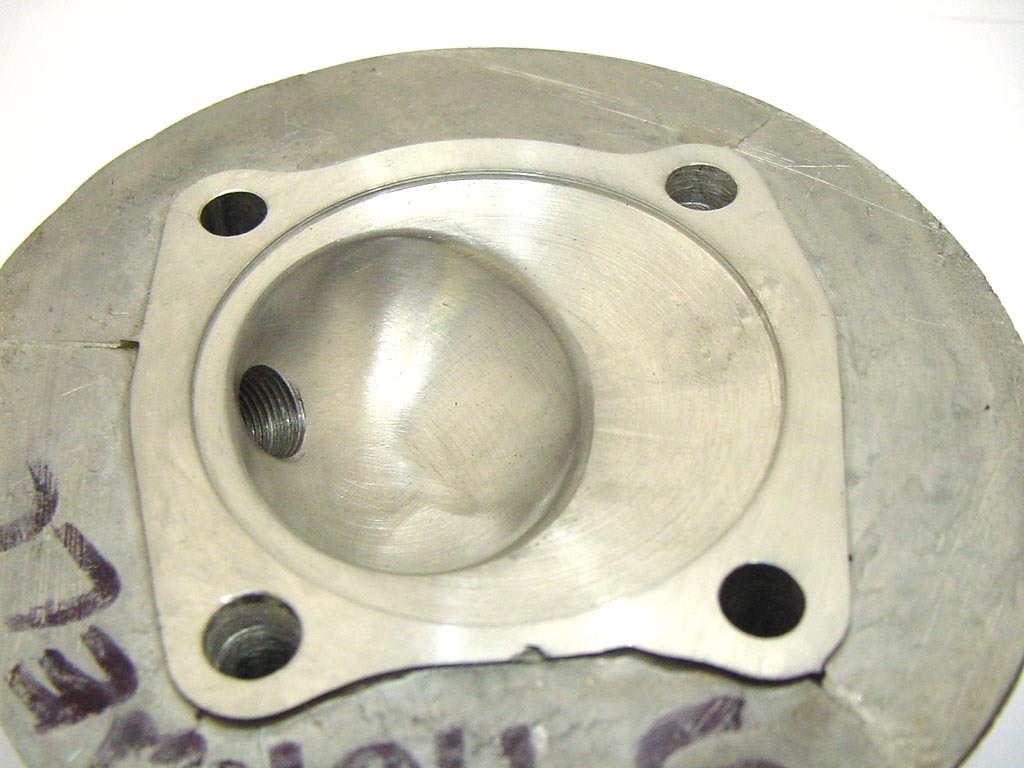
SIL head modified with recess for 60mm crank
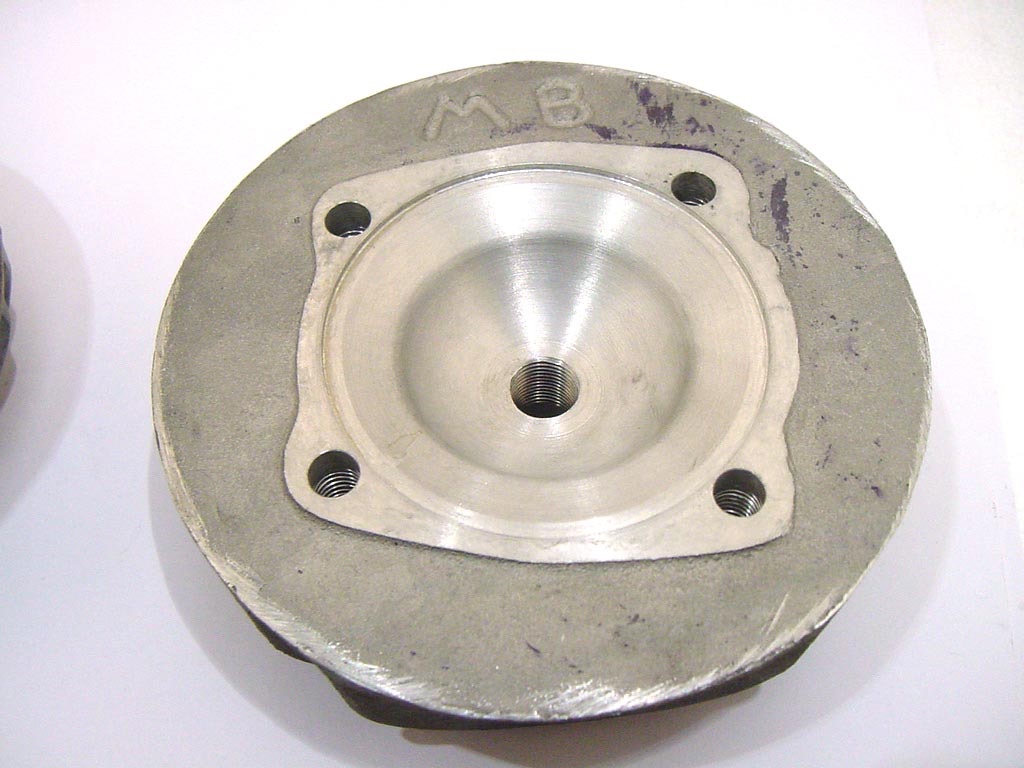
MB cast center plug head for cowlings with top fitting

MB cast center plug head for cowlings
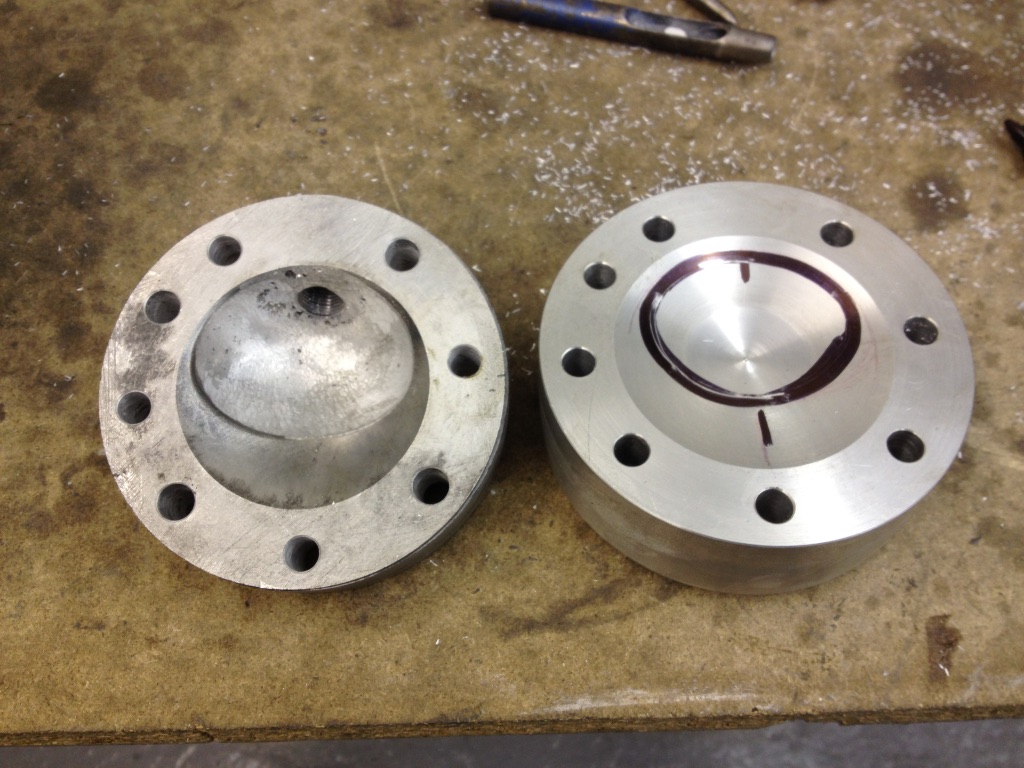
Heads made for solid alloy getting ready for the RT kits
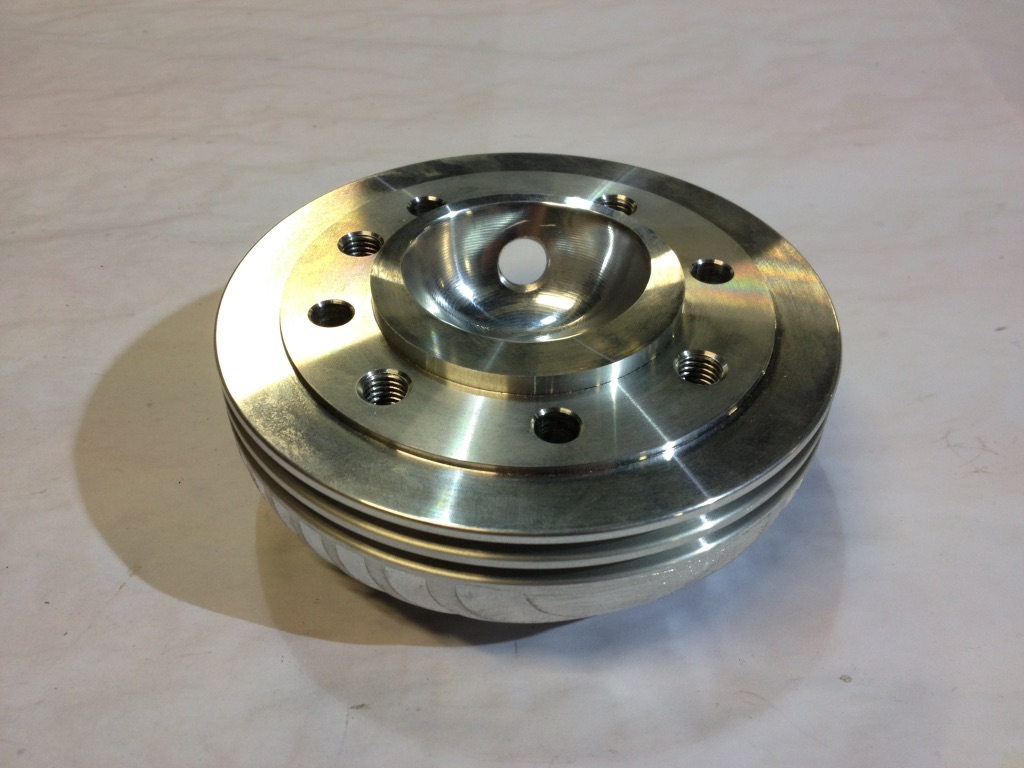
CNC Race- Tour heads after all the developments
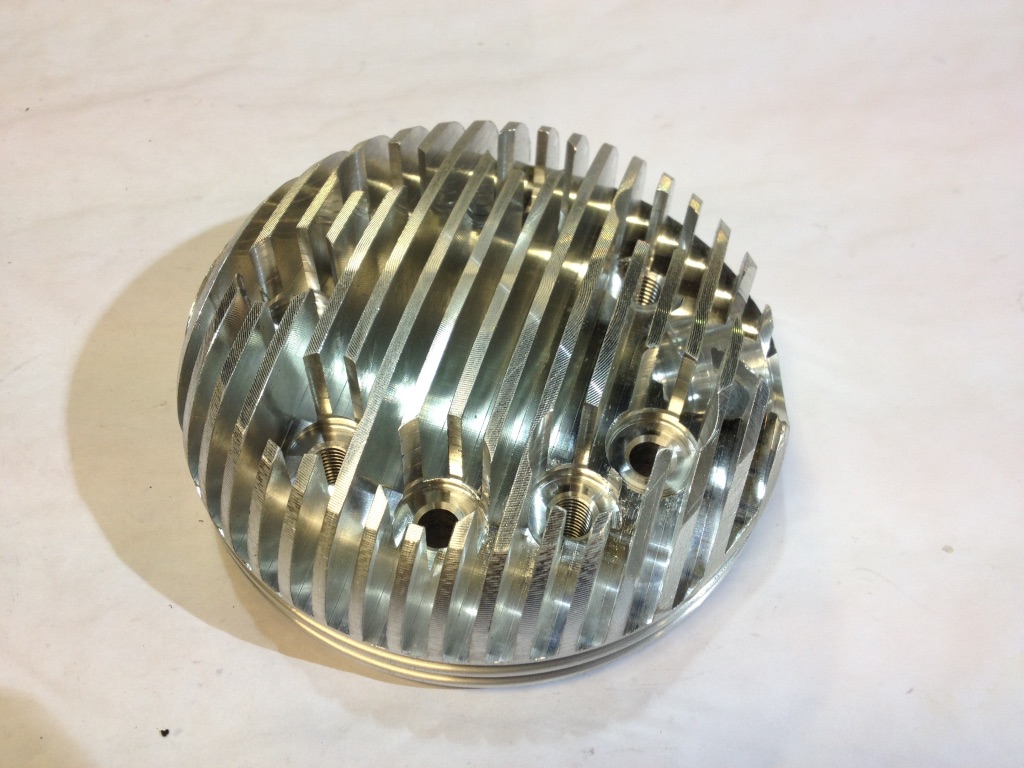
CNC Race-Tour head with extra cooling, 8 bolt holes
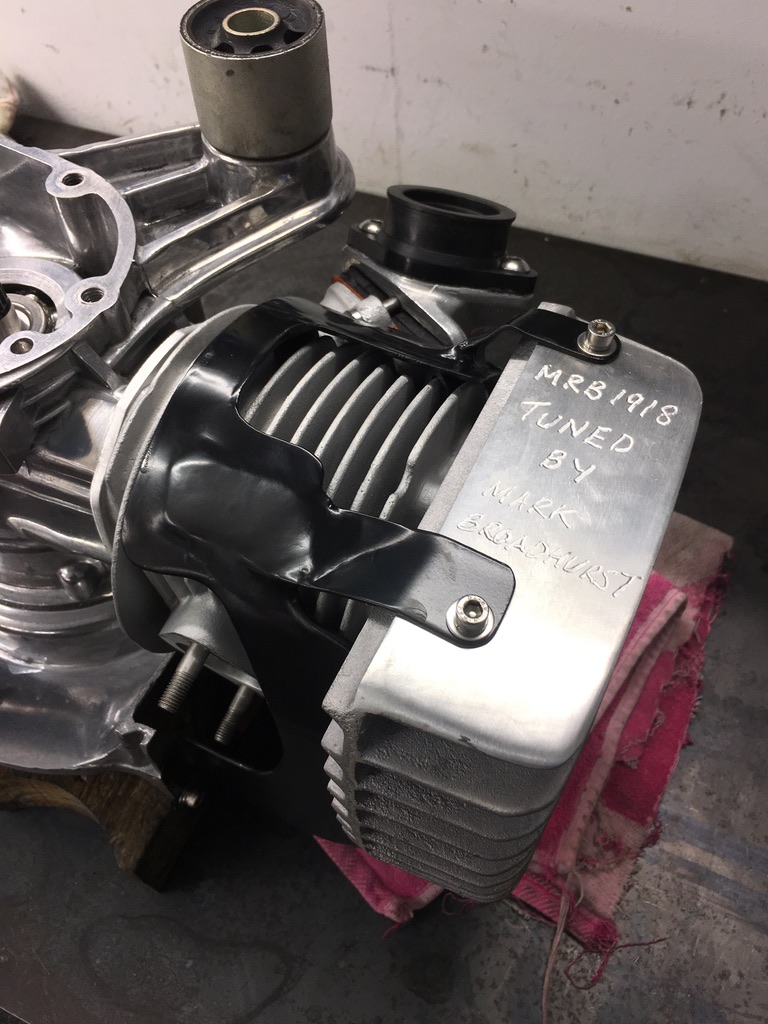
MB square head with fan cooling to the cyilnder
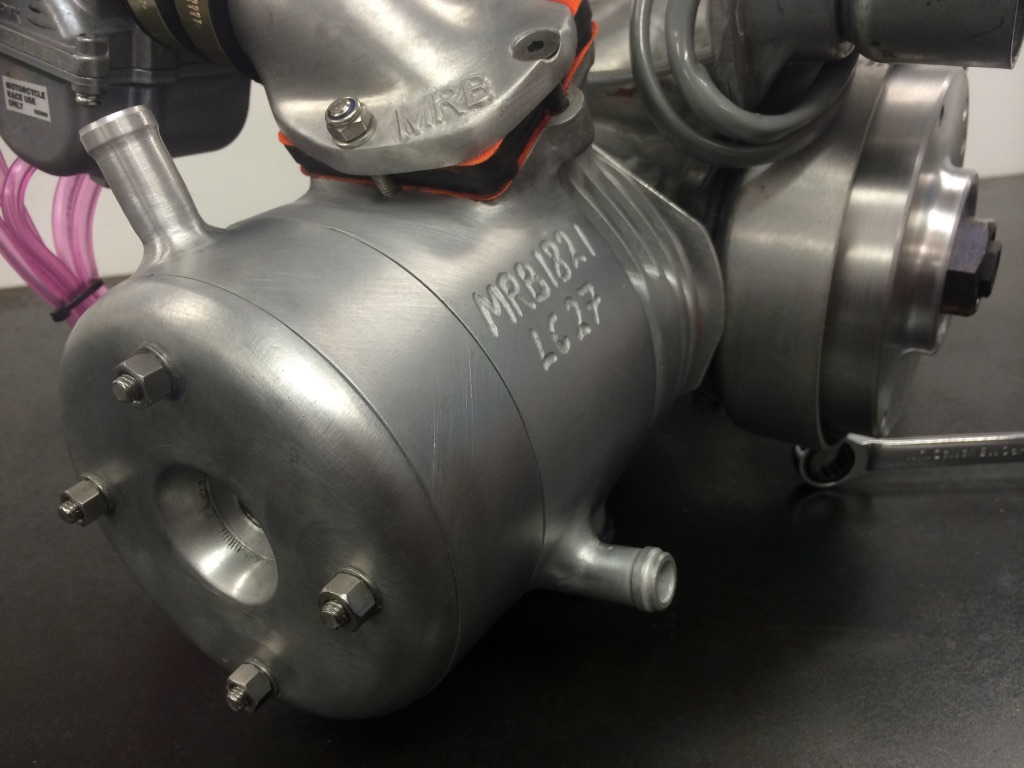
MB Liquid Cooled head and cylinder
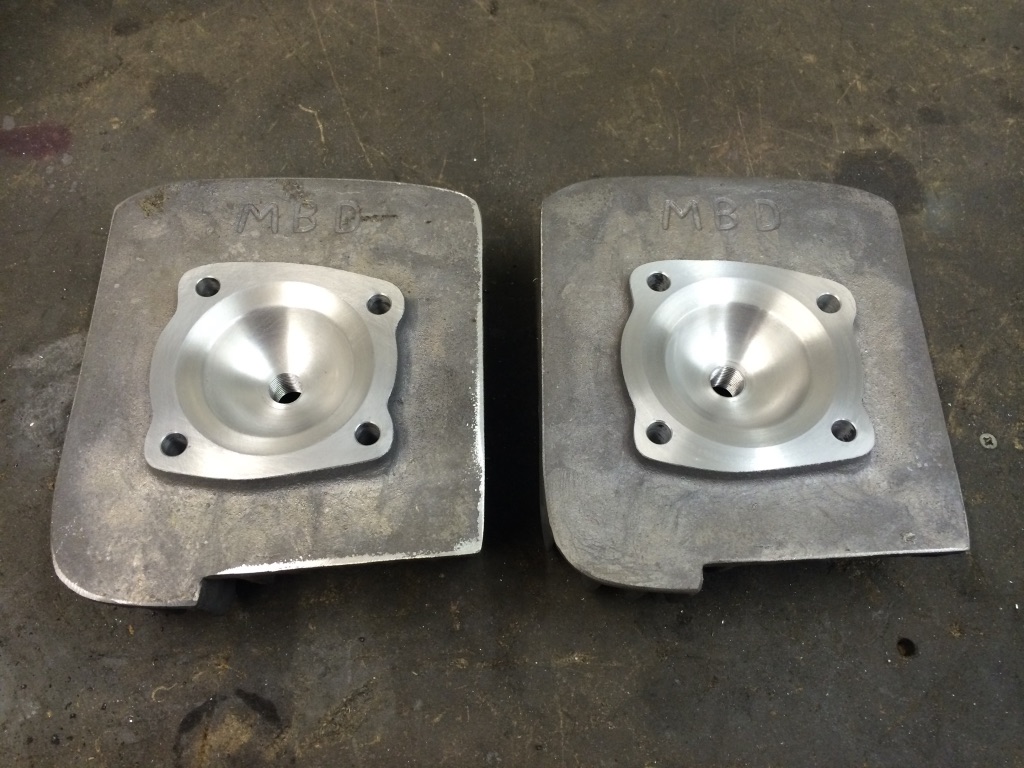
MB square center plug heads
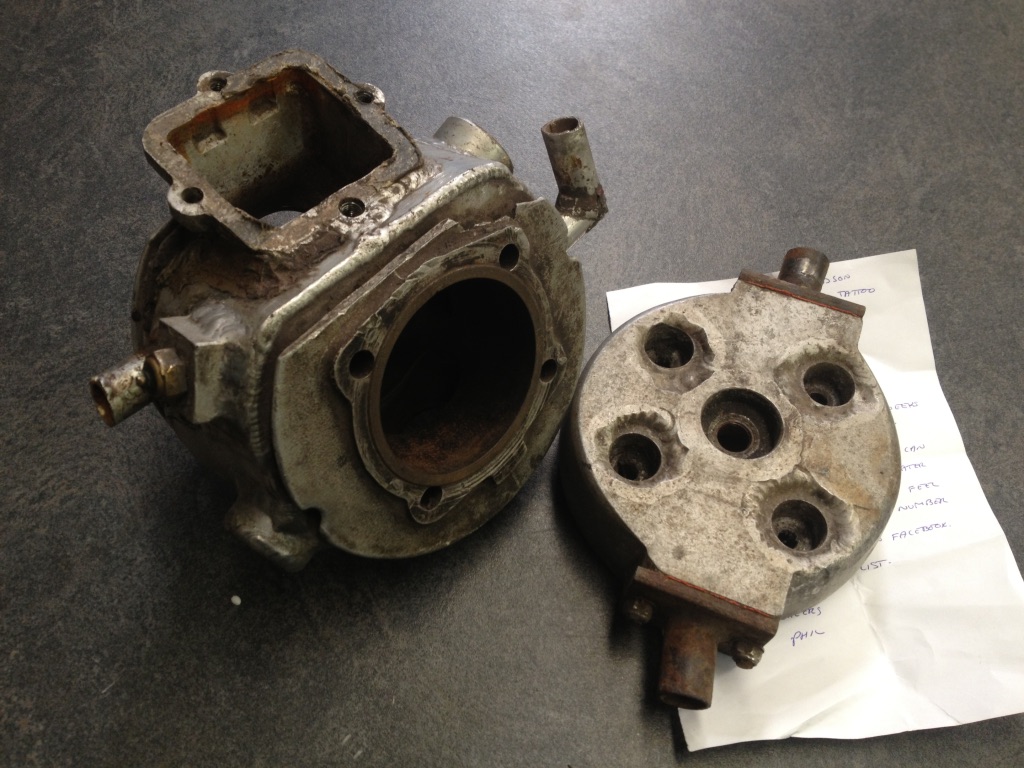
How not to do a Liquid Cooled head and cylinder, youd never guess who made it
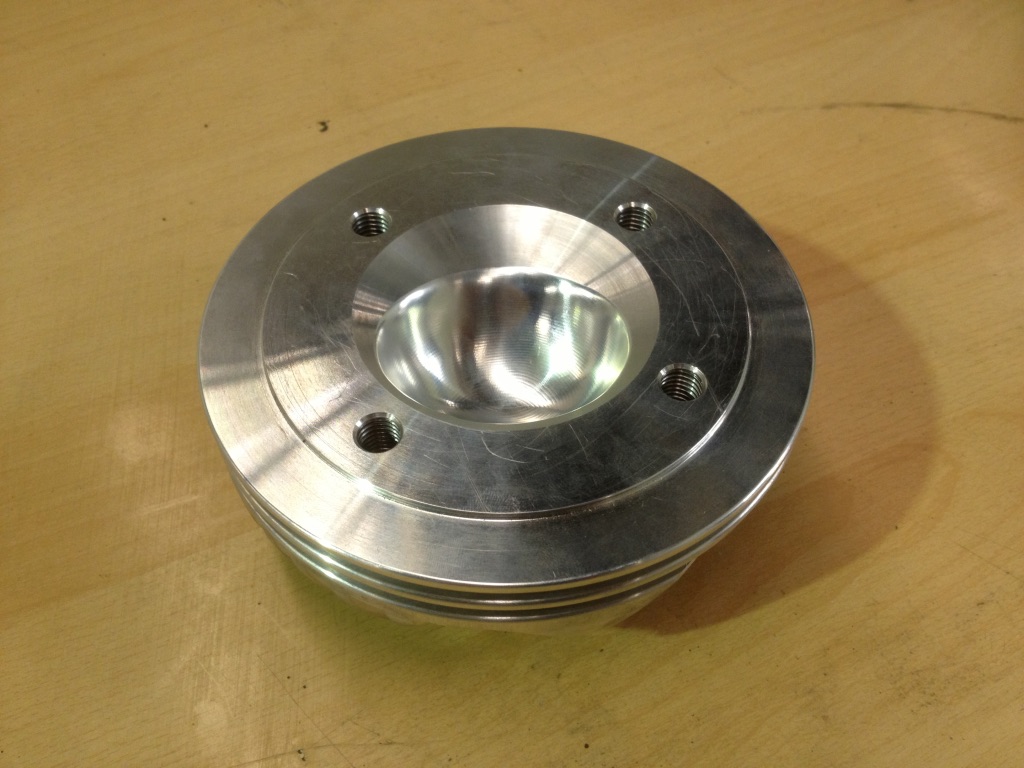
MBgm CNC 4 hole head for Ts1
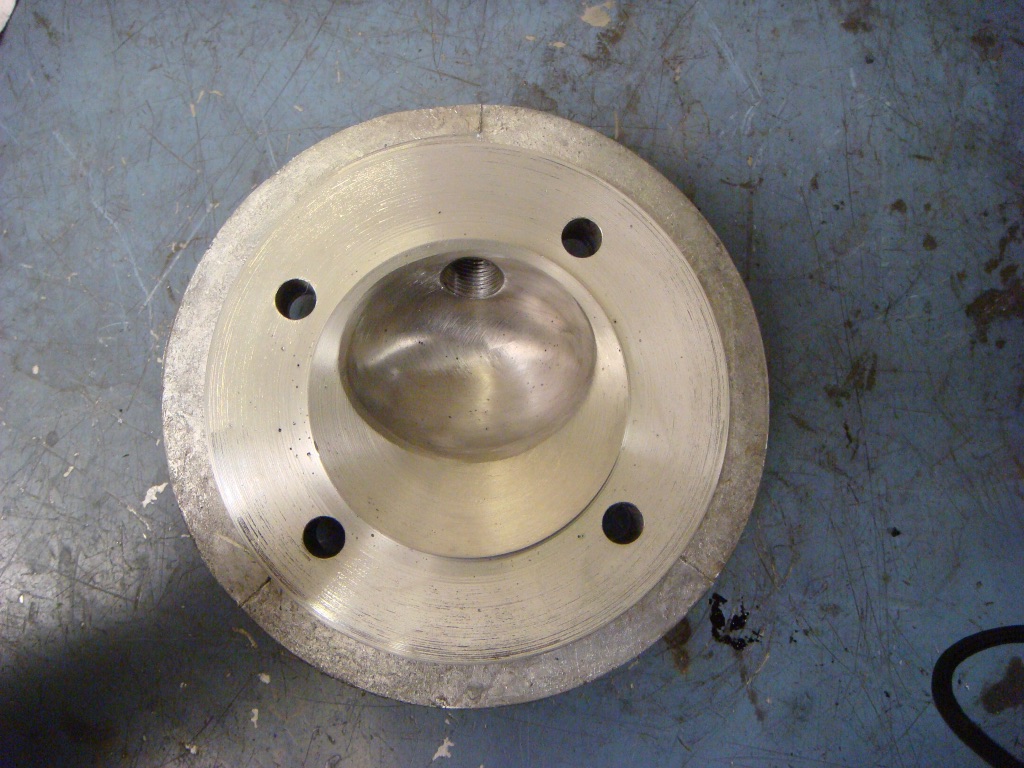
SIL head modified for early MB RT kits

AF head with the combustion area opened out correctly, note the little black marks these are casting imperfections, some are perfect others like Swiss Cheese but still a good head to work with
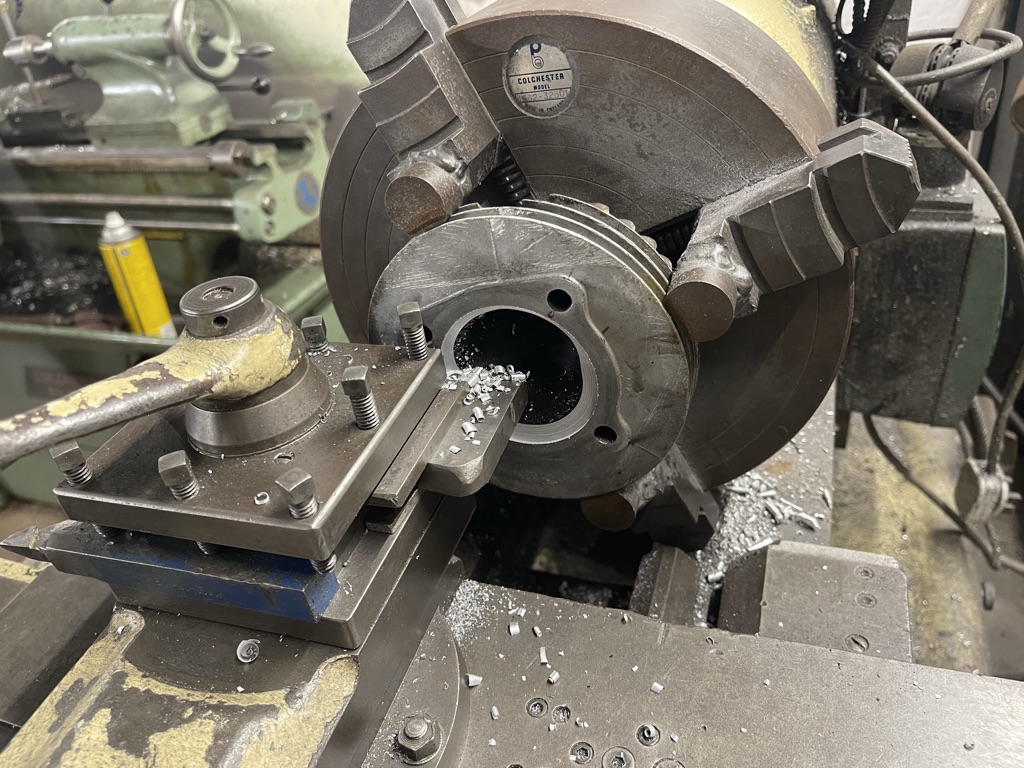
A SIL head set up in the lathe
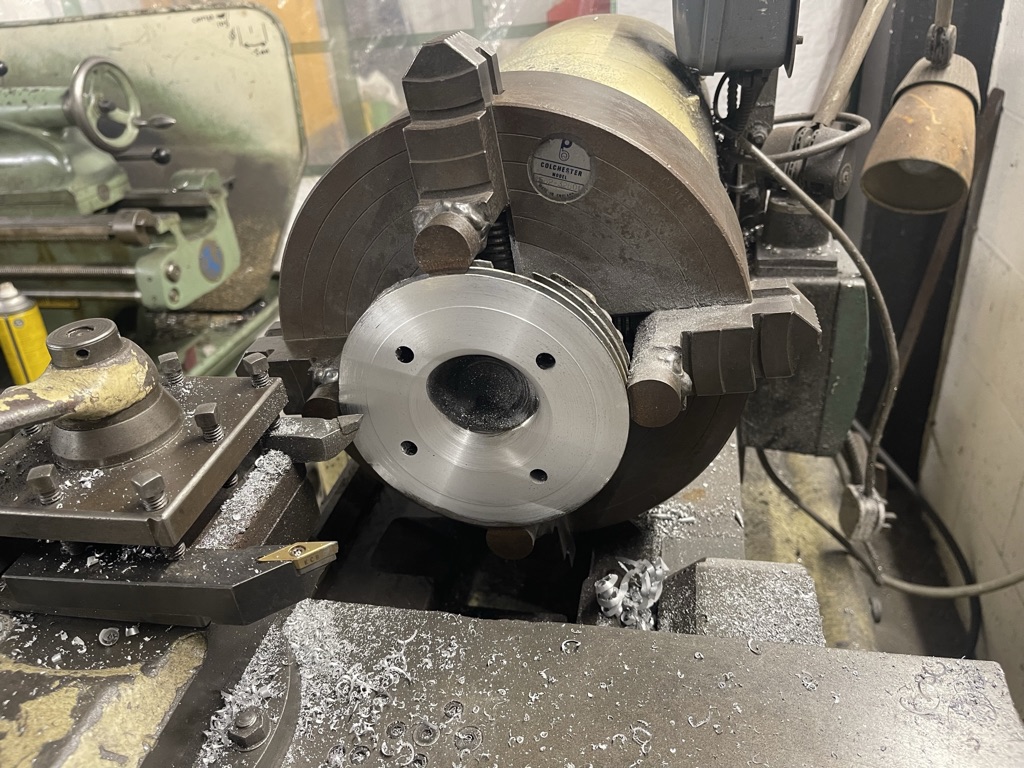
SIL head machined to suit a Honda 205 piston

Finished SIL head for a Honda 205 piston with combustion chamber opened for the road
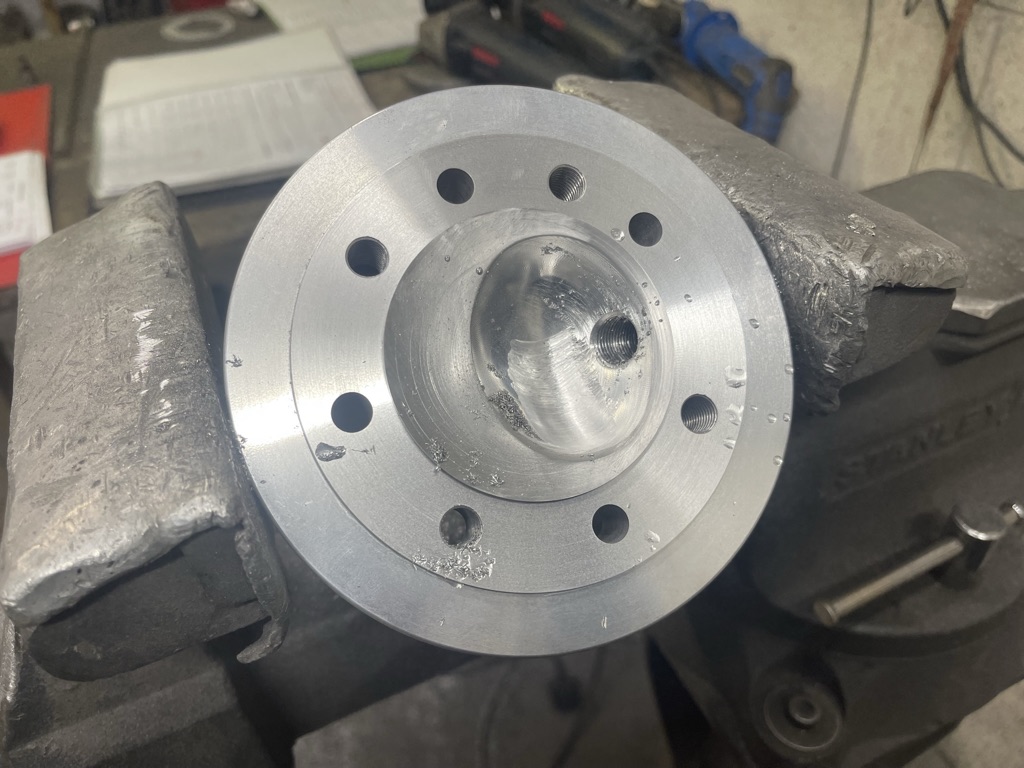
Race-Tour 240 head machined for a 62mm crank and RT piston, the start of altering the combustion chamber volume
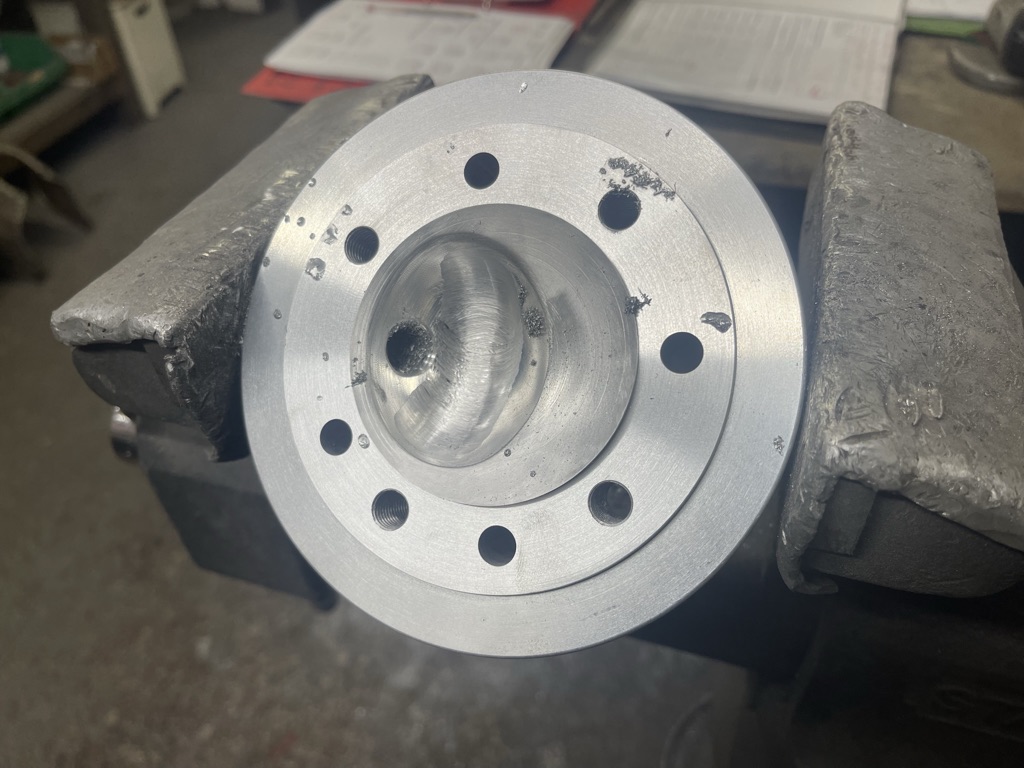
Volume needs removing below the plugarea
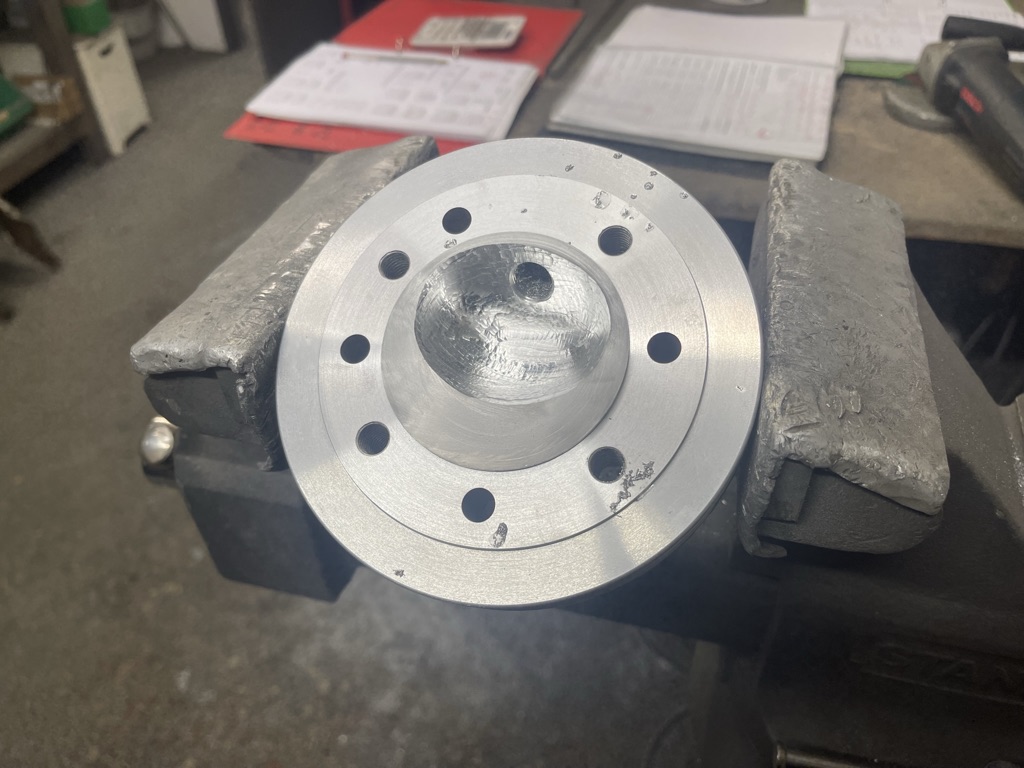
Then it needs blending to equal out the shape
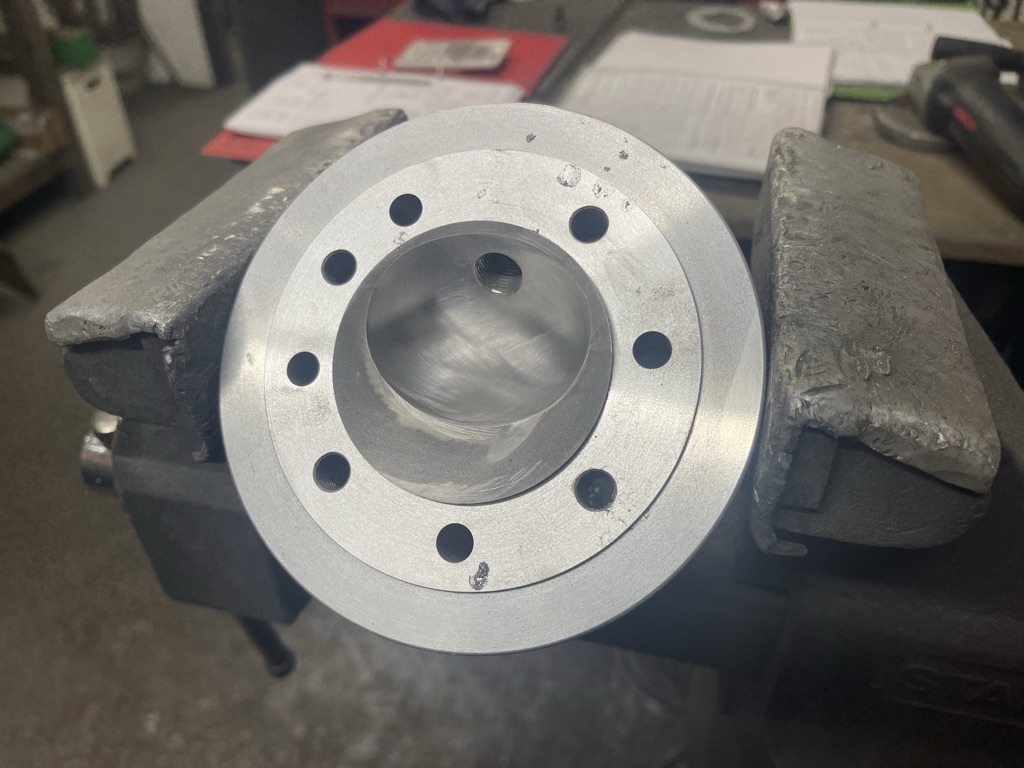
Finished ground and polished, now with corrected compression ratio to suit the larger 62mm crank
If you have a questions please email mark@scooters.co.uk



